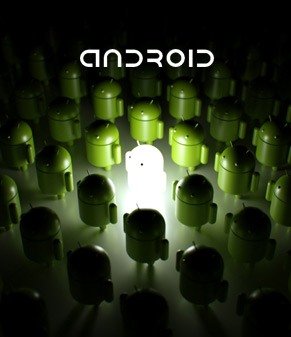Усовершенствование и закрепление новых навыков по Android разработке
Всем Q! Я являюсь Android и .NET разработчиком. Но, как известно, всегда лучше заниматься каким-то одним направлением, чтобы идти в ногу с развитием определённой технологии. Так уж вышло, что в нашей стране понятие "Android разработка" пришло совсем недавно. И, как и раньше с другими направлениями, у нас идёт сильное отставание от других стран в этом вопросе. Качественно высокой разработки нет, да и не у кого набираться опыта. Единственная возможность для меня и мне подобных людей - это freelance. Где просто приходится подтягивать свой уровень знаний на нужную планку.
Но и это далеко не всё. Заказчиков, как правило, мало интересует качество кода (отсюда и большая часть заказов дешёвым по качеству китайским, пакистанским и индийским разработчикам). Поэтому, для себя, для своего собственного развития, я решил подтянуть определённые знания.
Каждый полученный навык будет закреплён на практике. В данном случае будет создано открытое, небольшое приложение для сбора RSS.
Достижение данной цели переведёт меня на качественно высшую ступень разработчика и расширит мой кругозор.
Подписывайтесь и шаг за шагом мы изучим и обсудим нужный материал вместе.
В заключение будет сдан онлайн экзамен на Android разработчика. Сертификат, конечно же, далеко не показатель уровня разработчика, но на Udacity в 48 часовой экзамен входят основопологающие принципы разработки, которые частично захватывают поставленные мной задачи.
Goal Accomplishment Criteria
Каждый пункт цели выполнен.
Personal resources
Время, знания, навыки
Goal ecological compatibility
Цель полностью зависит от меня. Достижение этой цели позволит повысить качество моего кода и скорость разработки. Это, в свою очередь, позволит передать свой опыт другим разработчикам.
-
Создание основных общедоступных ресурсов приложения (досок, репозиториев)
Помимо создания и публикации данных вещей в общий доступ, будет опубликован файл с небольшим описанием проекта.
-
Написать US для приложения RSS Collector
-
Вывести общие правила для приложения
Чтобы не плутать среди своих же ресурсов, будут описаны небольшие базовые правила для приложения.
-
Изучение MVP для Android
Статьи, возможно книги.
-
Создание приложения, с использованием MVP
Пошаговое описание, каждый шаг подкреплён коммитом в репозитории
-
Изучение Dagger 2 и внедрение IoC в проект
Библиотека небольшая, поэтому отдельно дробить её по пунктам на изучение и использование не имеет смысла
-
Написание статьи (или серии статей) по MVP в Android
А также их публикация в открытом доступе
-
Написание статьи (или серии статей) по IoC в Android
А также их публикация в открытом доступе
-
Изучение Unit Tests в Android
Изучение по статьям и, возможно, книгам
-
Внедрение Unit Tests в приложение
Как правило, для этого MVP мы и используем. Подкрепляем коммитами
-
Написание серии статей по Unit Tests в Android
А также их публикация в открытом доступе
-
Изучение React Java+React Android
По статьям и официальным репозиториям.
-
Рефакторинг приложения для использования React Android
Плюс внедрение дополнительных библиотек, вроде RetroLambda. Закрепляем пошагово коммитами
-
Статья (серия статей) по React Android
И публикация их в общем доступе
-
Использовать возможности дополнительных программ для написания документации
Сюда входит и изучение этих программ и внедрение. Закрепляем статьёй и серией коммитов. Идея навеяна книгой "Программист-прагматик". Грамотное использование инструментов разработчиком.
-
Изучить возможности CI для Android
Пункт возможно расшириться. Пока непонятно - стоит ли использовать CI в данном проекте, даже в ознакомительных целях. В любом случае - статья.
-
Сдача сертификационного экзамена Android Developer на udacity
-
Публикация приложения и дополнение портфолио
Публикация, реклама в соц сетях. Краткая обзорная статья по приложению и дополнение портфолио на бирже, в резюме и блогах.
- 3269
- 25 July 2016, 15:32
Don't miss new posts!
Subscribe for the Goal and follow through to its completion



